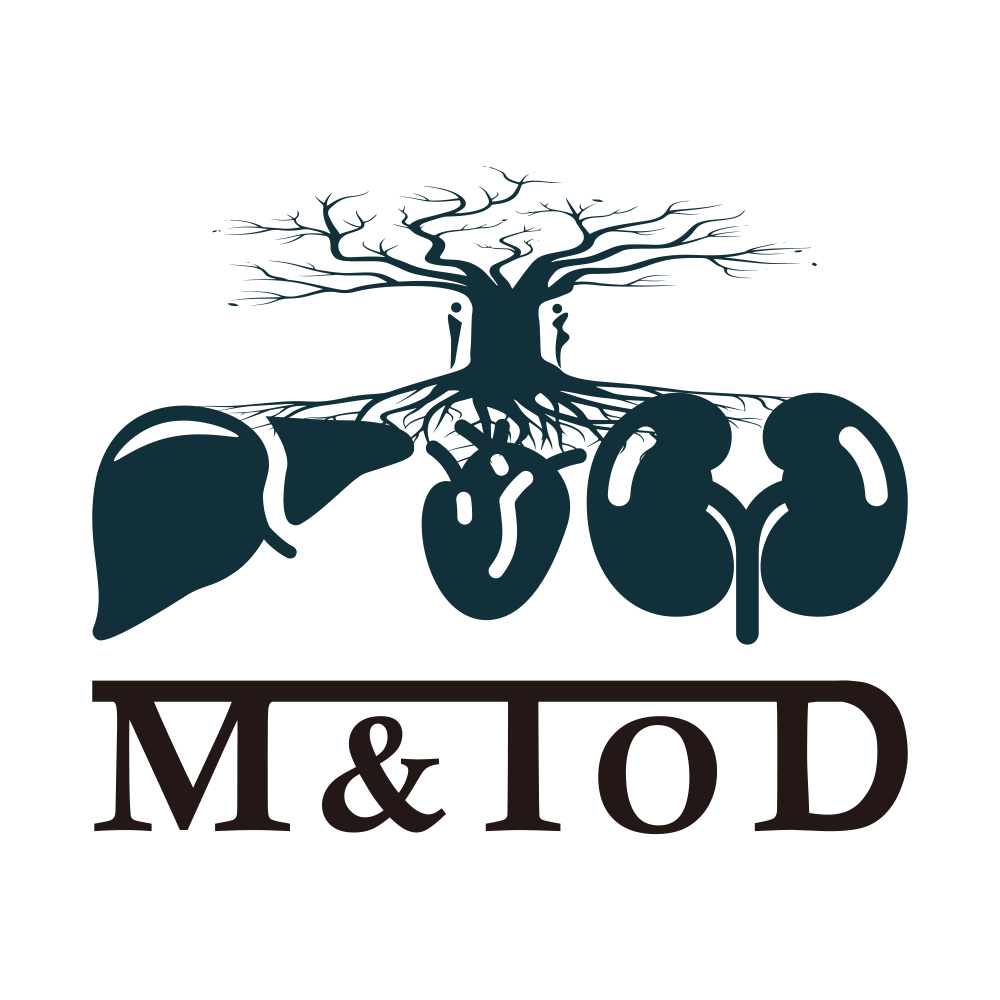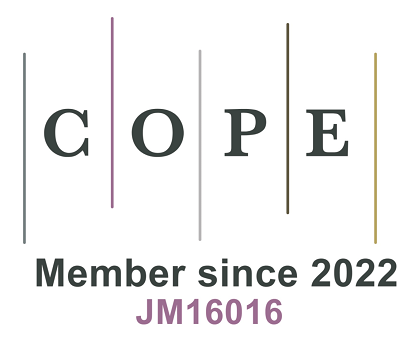Research progress and future prospects of small-molecule glucagon-like peptide-1 receptor agonists (GLP-1RAs)
Abstract
Glucagon-like peptide-1 receptor agonists (GLP-1RAs) are key agents in the treatment of type 2 diabetes mellitus (T2DM) and obesity. Small-molecule GLP-1RAs offer the advantage of oral administration while demonstrating efficacy comparable to that of peptide drugs. Despite synthetic challenges and solubility issues, compounds such as Pfizer’s PF-06882961 (Danuglipron), Eli Lilly’s LY3502970 (Orforglipron), and Hengrui Pharma’s HRS-7535 have shown potential to reduce glycosylated hemoglobin A1c (HbA1c) levels and body weight in Phase I-II trials, with mild to moderate gastrointestinal adverse effects, suggesting that they may be promising therapeutic options in the future.
Keywords
In 2021, the global diabetes prevalence in 20-79-year-olds was estimated to be 10.5% (536.6 million people), projected to rise to 12.2% (783.2 million) by 2045[1], highlighting the expanding market for glucagon-like peptide-1 receptor agonists (GLP-1RAs). Currently, peptide GLP-1RAs dominate the market, with oral semaglutide having completed Phase 3 trials. Additionally, 14 Phase 3 trials are underway, exploring various monotherapies and combination therapies involving GLP-1RAs. These drugs significantly lower blood glucose, reduce body weight, and decrease cardiovascular risk, and are particularly beneficial for patients with type 2 diabetes mellitus (T2DM) and obesity[2,3].
Injectable GLP-1RAs are associated with gastrointestinal adverse effects and injection dependence, leading to poor patient compliance[4]. Oral semaglutide solves the injection problem, but has limited bioavailability, is not as efficacious or cost-effective as subcutaneous formulations, and may lead to supply shortages. In addition, patients should avoid drinking or eating for 30 min before and after the dose.
In the STEP 2 trial, a significant weight loss (6.2%) and reduction in A1c (1.2%) were achieved with 2.4 mg of semaglutide, compared to placebo, after 68 weeks. The SURMOUNT-2 trial demonstrated that 10 and 15 mg of tirzepatide were more effective than placebo in reducing body weight (9.6% and 11.6%) and A1c (1.55% and 1.57%) after 72 weeks of treatment, with similar adverse effects to those seen with GLP-1 RA analogs[5]. Small-molecule agonists can theoretically replicate all the therapeutic effects of GLP-1 drugs and have the advantages of oral administration without interval between drug intake and meal, high bioavailability, and good stability, but face problems such as synthesis difficulties and poor water solubility, which limit their clinical application[6].
Studies on small-molecule GLP-1RAs, including Pfizer’s PF-06882961 (Danuglipron), Eli Lilly’s LY3502970 (Orforglipron), and Hengrui’s HRS-7535, may differ in efficacy and safety due to different binding modes and sites of action[7].
High-throughput screening (HTS) and structure-activity relationship (SAR) studies have been used to identify and optimize small-molecule GLP-1RAs, resulting in improved efficacy and selectivity, and reduced risk of off-target binding and cardiotoxicity. Danuglipron activates the receptor through specific amino acid interactions and improves the pharmacokinetic profile through optimization[8,9]. Chen et al. reported a novel class of 5,6-dihydro-1,2,4-triazine derivatives as potent GLP-1RAs with enhanced cAMP accumulation and drug-like properties, which significantly reduced blood glucose and food intake, providing a promising opportunity for the treatment of T2DM and obesity, providing durable efficacy[10,11].
Danuglipron demonstrated a favorable safety profile and preliminary efficacy in Phase I clinical trials[12], with gastrointestinal reactions being the most common adverse events. After 8 weeks of treatment, glycosylated hemoglobin A1c (HbA1c) decreased by 1.41% and body weight decreased by 1.87 kg[13]. A Phase II trial of Japanese adults with T2DM further confirmed its effectiveness in lowering blood glucose and reducing body weight. After 12 weeks of treatment (200 mg, twice daily), HbA1c decreased by 1.57%, and body weight decreased by 5.38 kg (5.7%)[14]. In patients with T2DM, after 16 weeks of treatment
Orforglipron demonstrated a favorable safety profile in Phase Ia clinical trials, with gastrointestinal events being the primary adverse reactions. Pharmacokinetic studies showed a half-life of 48.1 to 67.5 h, significant weight loss after 4 weeks of treatment (mean 5.4 kg, P < 0.05), decreased fasting glucose, and delayed gastric emptying[16]. In Phase Ib trials involving patients with T2DM, gastrointestinal reactions were the most common adverse reactions, with half-lives ranging from 29 to 49 h at 12 weeks, a 1.5% to 1.8% reduction in HbA1c, and a weight loss of 0.24 to 5.8 kg[17]. A Phase II trial (NCT05048719) demonstrated a 2.10% reduction in HbA1c at 26 weeks and a weight loss of 10.1 kg, and adverse effects were mainly mild to moderate gastrointestinal reactions[18]. Another Phase II trial (NCT05051579) showed significant weight loss of 9.4% to 14.7% in non-diabetic obese patients at 36 weeks[19]. In two Phase I trials, the half-life (t1/2) and median time to maximum concentration (tmax) of orforglipron were similar in both fed and fasted conditions, suggesting that orforglipron could be a viable oral therapeutic alternative for individuals with T2DM or obesity[16,20].
HRS-7535 demonstrated favorable safety and pharmacokinetics in the Phase I study with a half-life of 6.48-8.42 h supporting once-daily dosing. A weight loss of 4.38 kg (6.63%) was observed after 4 weeks, leading to entry into the Phase II/III study[21]. In parallel, a trial of HRS-735 in T2DM diabetic nephropathy (NCT06415214) is ongoing.
A summary of clinical trial results of small-molecule GLP-1RAs is provided in Table 1.
Summary of clinical trial results of small-molecule GLP-1RAs
| Drugs | Affiliations | Phase of clinical trials | Subjects | Security results | Effectiveness results |
| PF-06882961 (Danuglipron) | Pfizer | Phase I[12] | 98 patients with T2DM | The most common TEAEs were gastrointestinal (67.6%), including nausea (48.6%), vomiting (43.2%), abdominal discomfort (35.1%), diarrhea (10.8%), and headaches (10.8%), mostly mild to moderate | After 8 weeks, HbA1c was reduced by 1.41% and body weight by 1.87 kg vs. placebo |
| Phase I[13] | 37 patients with T2DM | TEAEs: nausea (49.0%), dyspepsia (32.7%), vomiting (26.5%), diarrhea (24.5%), headache (23.5%), constipation (20.4%) | After 28 days, HbA1c decreased by 0.9%-1.2% vs. 0.4%-0.7% in placebo, with weight loss of 2.2-7.2 kg vs. | ||
| Phase IIa[14] | 123 patients with T2DM; 28 obesity without diabetes | TEAEs: nausea (20.0%-47.6%), vomiting (18.2%-40.9%) in patients with T2DM | After 12 weeks of treatment (200 mg, BID), HbA1c decreased by 1.57%, and weight loss was 5.37 kg | ||
| Phase IIb[15] | 316 patients with T2DM | TEAEs: nausea (7%-33%), vomiting (0%-25%), diarrhea (4%-18%), with higher rates observed in higher dose groups | After 16 weeks of treatment (120 mg, twice a day), HbA1c decreased by 1.16%, and weight loss was 4.17 kg | ||
| LY3502970 (Orforglipron) | Eli Lilly | Phase Ia[16] | 12 healthy people | TEAEs: nausea (11% to 22%), constipation (11% to 33%), vomiting (4% to 18%), abdominal discomfort (6% to 13%), and headache (7% to 29%) | After 4 weeks of treatment, weight loss was 5.4 kg in subjects treated with orforglipron compared to the placebo group (P < 0.05) |
| Phase Ib[17] | 68 patients with T2DM | TEAEs: nausea (33.3%-77.8%), vomiting (14.3%-55.6%), diarrhea (0%-22.2%), abdominal discomfort (0%-22.2%) | After 26 weeks of treatment, HbA1c decreased by 1.5% to 1.8%, and weight loss was 0.24 to 5.8 kg | ||
| Phase II[18] | 383 patients with T2DM, BMI ≥ 23 kg/m2 | TEAEs: gastrointestinal adverse events of mild to moderate severity (44.1% to 70.4% in the orforglipron group, and 34.0% in the dulaglutide group) | After 26 weeks of treatment, HbA1c decreased by 2.1%, and weight loss was 10.1 kg | ||
| Phase II[19] | 272 obesity without T2DM | TEAEs: nausea (37%-58%), vomiting (14% to 32%) | After 36 weeks of treatment, weight loss was 9.4% ~ 14.7% | ||
| HRS-7535 | Hengrui | Phase I[21] | 58 healthy people | TEAEs: nausea (16.7% at 15 mg, 33.3% at 60 mg and 100.0% at 120 mg), vomiting [no participants at 15 or 60 mg, and in 6 (100.0%) at 120 mg] | HRS-7535 [120 mg (30/60/90/120-mg titration scheme)]: after 36 weeks of treatment, weight loss was 4.38 kg (6.63%) |
There are no cardiovascular outcomes trials (CVOT) on danuglipron, Orforglipron, or others. Danuglipron showed a slight decrease[12] or increase in blood pressure[13] in different studies. A Phase 1b study of Orforglipron reported no cardiovascular events in patients with T2DM over a 4-week period[17], and possible cardiovascular benefits by improving blood pressure and lipid levels[19].
GLP-1RAs have been extensively studied and proven to be effective in ameliorating metabolic dysfunction-associated steatotic liver disease (MASLD) and chronic kidney disease (CKD)[22-24]. For instance, semaglutide significantly reduced liver enzyme levels in MASLD patients and attenuated hepatic steatosis through anti-inflammatory and antioxidant mechanisms[22]. In terms of renal protection, peptide-based GLP-1RAs such as semaglutide have been shown to reduce the risk of major renal disease events [a composite of the onset of kidney failure, at least a 50% reduction in the estimated glomerular filtration rate (eGFR) from baseline, or death from kidney-related or cardiovascular causes] by 24%[23]. In addition, semaglutide reduced the incidence of cardiovascular death/myocardial infarction/stroke by 18% [HR: 0.82 (95%CI: 0.68-0.98); P = .03], with consistent efficacy across eGFR categories and urine albumin/creatinine ratio levels[24]. In addition, there has been much interest in the potential mental health benefits of GLP-1RAs. In a Phase 2, double-blind, randomized, placebo-controlled trial, lixisenatide reduced the progression of motor disability at 1 year in patients with Parkinson’s disease compared with placebo[25]. However, larger trials conducted more recently have not confirmed that exenatide improves Parkinson’s disease, so further research is needed. Recent studies have also shown that GLP-1RA may prevent cognitive impairment and neurodegenerative diseases such as Alzheimer’s disease[26].
In contrast, small-molecule GLP-1RA has emerged as a new therapeutic option, showing similar efficacy to peptide GLP-1RA in early clinical trials[16-19]. Small-molecule GLP-1RAs have potential benefits in the treatment of MASLD, CKD, cardiovascular disease, and mental health. However, peptide GLP-1RAs are more clinically established and their long-term efficacy and safety are well documented. The long-term impact of small-molecule GLP-1RA remains to be confirmed by additional clinical trial data.
In addition, small-molecule GLP-1RAs are less expensive to develop and produce, which may reduce the consumption of healthcare resources in long-term treatment[8-11]. If priced appropriately and included in health insurance, these agents could alleviate the financial burden of patients and improve drug accessibility.
In the Phase 1b study of orforglipron, two participants experienced elevated levels of lipase and amylase on Day 91 (7 days after the last dose of the study drug); the severity was mild or moderate in both cases. Otherwise, no effects on pancreatic or hepatic enzymes were observed, indicating off-target effects of orforglipron treatment are unlikely[17]. However, small-molecule GLP-1RAs must undergo a stringent regulatory approval process, including providing sufficient preclinical and clinical data to demonstrate the drug’s safety and efficacy. The main constraints of the existing research included geographical imbalances and the limited number of participants in the trials. Small-molecule GLP-1RAs need to conduct head-to-head clinical research with existing GLP-1RAs (such as injectable peptide drugs) to prove their advantages in efficacy, safety, convenience, and cost-effectiveness.
Of the three small-molecule non-peptide GLP-1RAs, Orforglipron is closest to the market based on clinical efficacy and safety data. CVOT results for small-molecule GLP-1RAs are critical for premarket evaluation, and their structural insights and clinical advances may provide new oral therapeutic options without interval between drug intake and meal for T2DM and obesity in the future.
DECLARATIONS
Authors’ contributions
Writing - original draft: Tu Y
Writing - revision and editing: Yu H
Availability of data and materials
Not applicable.
Financial support and sponsorship
This study was supported by National Natural Science Foundation of China (82470881), Shanghai Municipal Health Commission of General Program (202440117), National Key Research and Development Project of China (2016YFA0502003), Shanghai Key Clinical Center for Metabolic Disease (2017ZZ01013), Shanghai Municipal Key Clinical Specialty and Shanghai Science and Technology Commission (21Y11910900), Hainan Provincial Natural Science Foundation of China (822MS207), and Hainan Provincial Natural Science Foundation of China (823MS171).
Conflicts of interest
All authors declared that there are no conflicts of interest.
Ethical approval and consent to participate
Not applicable.
Consent for publication
Not applicable.
Copyright
© The Author(s) 2025.
REFERENCES
1. Sun H, Saeedi P, Karuranga S, et al. IDF diabetes atlas: global, regional and country-level diabetes prevalence estimates for 2021 and projections for 2045. Diabetes Res Clin Pract. 2022;183:109119.
2. Kokkorakis M, Chakhtoura M, Rhayem C, et al. Emerging pharmacotherapies for obesity: a systematic review. Pharmacol Rev. 2024;Online ahead of print.
3. Pantelis AG, Lapatsanis DP. Metabolic bariatric surgery in face of new anti-obesity medications-10 + 1 challenges. Metab Target Organ Damage. 2023;3:17.
4. Gasoyan H, Pfoh ER, Schulte R, Le P, Rothberg MB. Early- and later-stage persistence with antiobesity medications: a retrospective cohort study. Obesity. 2024;32:486-93.
5. American Diabetes Association Professional Practice Committee. 9. pharmacologic approaches to glycemic treatment: standards of care in diabetes-2025. Diabetes Care. 2025;48:S181-206.
6. Sidik S. Beyond Ozempic: brand-new obesity drugs will be cheaper and more effective. Nature. 2023;619:19.
7. Choe HJ, Cho YM. Peptidyl and non-peptidyl oral glucagon-like peptide-1 receptor agonists. Endocrinol Metab. 2021;36:22-9.
8. Griffith DA, Edmonds DJ, Fortin JP, et al. A small-molecule oral agonist of the human glucagon-like peptide-1 receptor. J Med Chem. 2022;65:8208-26.
9. Kadar EP, Eng H, Kalgutkar AS, Holliman CL, Steeno GS. Development of a sensitive LC-MS/MS assay to support human microdose study for an oral agonist of the GLP-1 receptor. Bioanalysis. 2024;16:545-55.
10. Chen L, Yun Y, Guo S, et al. Discovery of novel 5,6-dihydro-1,2,4-triazine derivatives as efficacious glucagon-like peptide-1 receptor agonists. J Med Chem. 2023;66:7988-8010.
11. Tamura T, Noda H, Joyashiki E, et al. Identification of an orally active small-molecule PTHR1 agonist for the treatment of hypoparathyroidism. Nat Commun. 2016;7:13384.
12. Saxena AR, Gorman DN, Esquejo RM, et al. Danuglipron (PF-06882961) in type 2 diabetes: a randomized, placebo-controlled, multiple ascending-dose phase 1 trial. Nat Med. 2021;27:1079-87.
13. Ono R, Furihata K, Ichikawa Y, et al. A phase 1 study to evaluate the safety, tolerability, pharmacokinetics and pharmacodynamics of danuglipron (PF-06882961), an oral small-molecule glucagon-like peptide-1 receptor agonist, in Japanese adults with type 2 diabetes mellitus. Diabetes Obes Metab. 2023;25:805-14.
14. Saxena AR, Frias JP, Gorman DN, et al. Tolerability, safety and pharmacodynamics of oral, small-molecule glucagon-like peptide-1 receptor agonist danuglipron for type 2 diabetes: a 12-week, randomized, placebo-controlled, phase 2 study comparing different dose-escalation schemes. Diabetes Obes Metab. 2023;25:2805-14.
15. Saxena AR, Frias JP, Brown LS, et al. Efficacy and safety of oral small molecule glucagon-like peptide 1 receptor agonist danuglipron for glycemic control among patients with type 2 diabetes: a randomized clinical trial. JAMA Netw Open. 2023;6:e2314493.
16. Pratt E, Ma X, Liu R, et al. Orforglipron (LY3502970), a novel, oral non-peptide glucagon-like peptide-1 receptor agonist: a phase 1a, blinded, placebo-controlled, randomized, single- and multiple-ascending-dose study in healthy participants. Diabetes Obes Metab. 2023;25:2634-41.
17. Pratt E, Ma X, Liu R, et al. Orforglipron (LY3502970), a novel, oral non-peptide glucagon-like peptide-1 receptor agonist: a phase 1b, multicentre, blinded, placebo-controlled, randomized, multiple-ascending-dose study in people with type 2 diabetes. Diabetes Obes Metab. 2023;25:2642-9.
18. Frias JP, Hsia S, Eyde S, et al. Efficacy and safety of oral orforglipron in patients with type 2 diabetes: a multicentre, randomised, dose-response, phase 2 study. Lancet. 2023;402:472-83.
19. N Engl J Med 2023. pp. 877-88. Wharton S, Blevins T, Connery L, et al; GZGI Investigators. Daily oral GLP-1 receptor agonist orforglipron for adults with obesity. N Engl J Med. 2023;389:877-88.
20. Ma X, Liu R, Pratt EJ, Benson CT, Bhattachar SN, Sloop KW. Effect of food consumption on the pharmacokinetics, safety, and tolerability of once-daily orally administered orforglipron (LY3502970), a non-peptide GLP-1 receptor agonist. Diabetes Ther. 2024;15:819-32.
21. Wu J, Zhou R, Zhang Q, et al. Safety, pharmacokinetics and pharmacodynamics of HRS-7535, a novel oral small molecule glucagon-like peptide-1 receptor agonist, in healthy participants: a phase 1, randomized, double-blind, placebo-controlled, single- and multiple-ascending dose, and food effect trial. Diabetes Obes Metab. 2024;26:901-10.
22. Majzoub AM, Nayfeh T, Barnard A, et al. Systematic review with network meta-analysis: comparative efficacy of pharmacologic therapies for fibrosis improvement and resolution of NASH. Aliment Pharmacol Ther. 2021;54:880-9.
23. Perkovic V, Tuttle KR, Rossing P, et al; FLOW Trial Committees and Investigators. Effects of semaglutide on chronic kidney disease in patients with type 2 diabetes. N Engl J Med. 2024;391:109-21.
24. Mahaffey KW, Tuttle KR, Arici M, et al. Cardiovascular outcomes with semaglutide by severity of chronic kidney disease in type 2 diabetes: the FLOW trial. Eur Heart J. 2024;Online ahead of print.
25. Meissner WG, Remy P, Giordana C, et al; LIXIPARK Study Group. Trial of lixisenatide in early parkinson’s disease. N Engl J Med. 2024;390:1176-85.
Cite This Article
How to Cite
Download Citation
Export Citation File:
Type of Import
Tips on Downloading Citation
Citation Manager File Format
Type of Import
Direct Import: When the Direct Import option is selected (the default state), a dialogue box will give you the option to Save or Open the downloaded citation data. Choosing Open will either launch your citation manager or give you a choice of applications with which to use the metadata. The Save option saves the file locally for later use.
Indirect Import: When the Indirect Import option is selected, the metadata is displayed and may be copied and pasted as needed.



















Comments
Comments must be written in English. Spam, offensive content, impersonation, and private information will not be permitted. If any comment is reported and identified as inappropriate content by OAE staff, the comment will be removed without notice. If you have any queries or need any help, please contact us at [email protected].